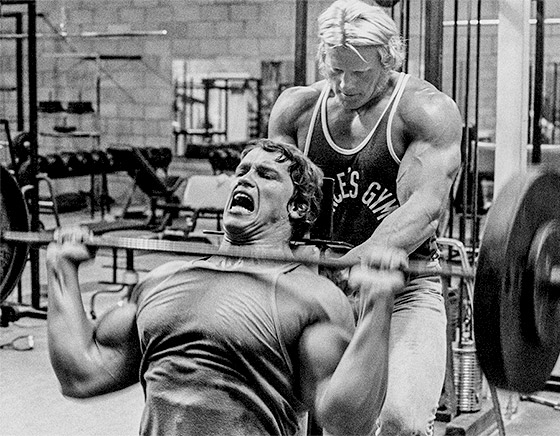Forced Reps – Advanced Technique To Maximize Your Gains

Progressive overload works well for the majority of lifters who want to get fit, but there will be a point of your training life where you’ll eventually hit a plateau. This is the point where you’ll find it impossible to put on heavier loads onto the bar.
For someone who’s competing in a strength competition, you’ll have to find creative ways to shock your muscles into growth, and one of the ways that you can force your muscle to grow is through the usage of forced reps.
What Is A Forced Rep?
As the name itself implies, a forced rep is a rep completed when you have reached total muscular fatigue and struggle to squeeze out one more rep. At this moment, you’ll have to use the assistance from a spotter to help going past the barrier of failure and utilizes even more muscle fiber, thereby forcing it to get stronger.
Pushing yourself beyond failure can be dangerous if you do not pay attention to what you’re doing. It’s important to have an experience spotter to provide minimal assistance to lift the weights up, but make sure they’re only helping when you can’t lift it up on your own.
Your spotter should be on standby mode all the time, and interfere when immediately when you are unable to perform your next rep. Ideally, he should be placing his fingers instead of the palm under the bar, and slowly applying enough force to help pushing the bar up for 3-4 rep more reps.
It’s also your responsibility not to let go of the bar and let your spotter do the entire job, otherwise all the hard work would have rendered failure. Be aware of how much you can lift, and don’t think that just because you have a spotter means you’ll be able to add on 50lbs to your lift.
The Responsibility Of A Spotter
1. Strengthen the belief that they can lift the weight by motivating and cheering them to help boosting their confidence.
2. Only interfere when they couldn’t lift for one more rep. Pay attention to their facial expressions, and if you’re not good at reading it, have them telling you the normal reps they’re able to do on their own so you can estimate when to offer your help.
3. Help setting the weight up for the lifter. Lifter should focus more on the lifting part rather than having their attention diverted.
4. Treat it like it’s a serious business. No fooling around and focus solely on the weights. Pushing past your 1RM is no joke, and you don’t want to imagine the amount of pain your body will feel when the weights start crushing your bones.
How To Know When To Stop
If the weight stops at the same position for longer than three seconds, it means you’re likely not able to push the weights up. Forcing it by jerking it up will only increase your risk of getting injured. Form should always be the number one priority when it comes to weight lifting.
How To Do It On Your Own
Forced reps can also be applied while you’re training on your own, but keep in mind that it’s only limited to single handed isolation exercises. For example, if you’re performing dumbbell preacher curl with your right hand and you can’t lift it anymore, have your left fingers put under your right wrist, and slowly guide it up.

